FORT BRAGG, N.C. (Army News Service, June 11, 2008) - The Army has purchased 3,205 TRX Suspension Trainer Aca,!A"Fitness Anywhere,Aca,!A? kits to help deployed Soldiers get complete-body workouts wherever they can find a beam, doorway or tree limb to anchor the resistance-training device.
Soldiers already have mounted several of the systems to Humvees, tanks and cargo crates. The Force Trainer kits were bought by the Army Family and Morale, Welfare and Recreation Command.
MWR employees at Fort Belvoir, Va., will send 205 of the combat-boot-sized systems to Iraq and Afghanistan as part of the recreation kits for deployed troops. Three thousand more were issued to Army units for a pilot program at Fort Bragg, where about 100 Soldiers volunteered for train-the-trainer clinics with instructors from Fitness Anywhere, Inc.
Those Soldiers, in turn, will train other Soldiers in their respective units, which will be issued more of the systems before deploying to the Middle East.
"I'm never going to walk away from free weights, but for somebody that wants to maintain, especially during deployment, it's great," Sgt. Wes Bard said after completing a three-hour, train-the-trainer session at Fort Bragg. "I was doing the chest press, and compared to a bench press, it's working all those little stability muscles. It's a lot harder."
Bard, a 6-foot tall, 260-pound former football player, wrestler, and track and field competitor who tossed high school girls high into the air as a competition cheerleader, said he would use this system - even if free weights were available.
"There's no doubt at all," Bard said. "Don't be fooled by its appearance. I walked out here and looked at it and thought: 'Yeah, I think pretty much anybody could figure out how to rig it up and use it."
"But don't think it's going to be a cakewalk. It works the core great. And because we run every day, I really liked using it for the legs because you want to keep your legs in shape but you don't want to add mass. Weight training for your legs isn't really going to help you with the distances we run," he said.
Army commanders already have requested more of the kits, which include a quick-start guide, basic training DVD, 12-week strength and cardio training manual, and a mesh carry bag.
"Our missions take our Soldiers worldwide in some of the most austere environments," a mission commander wrote in an e-mail to Janet Mackinnon, the acting sports, fitness and aquatics director at FMWRC in Alexandria, Va.
"In the past we have been taking bulky equipment with the unit, or in some cases, actually building equipment from existing materials. We think the TRX will fit the bill for our command's fitness needs," she said.
Mackinnon has been down this road before. In 2004, she began issuing troops a much simpler workout tool called Army Fitness Deployed, a resistance-training kit that consisted of a strand of elastic tubing in a pocket-sized package. She sent more than 680,000 of those kits to Army units and Soldiers around the world.
"I wanted to do something that is the next evolution, if you will, that's a more intense workout for the people that really need it and just don't have access to the other things," she said.
Mackinnon is excited about this pilot program, and hopes to expand its scope.
"I can only do as much as the funding allows me to do," she said. "Basically, I want to make sure this is worth it. Do the Soldiers like it' Are they getting a good workout' Are they also getting some recreation in'"
The Fitness Anywhere folks believe their system is the answer.
"This could be an unprecedented launch of awareness into the Army on suspension training and the TRX," said Ken Taylor, a former Navy SEAL who helped instruct the train-the-trainer clinics at Fort Bragg. He knows firsthand how difficult it is to train in the field and can't wait to see the reactions of the Soldiers using total-resistance training.
"There are hundreds and hundreds of service members that on their own have recognized the value of the suspension training and have been purchasing these via our Web site," he said.
The Soldiers at Fort Bragg were delighted to receive the training and experience the full-body effects of a TRX workout.
"It was a big surprise to just see how much stuff we could do," Sgt. Tavares Wilson said. "Not just the different exercises, but the different exercises for every body part. I'm going to go home and show it to my wife and we're going to work out at home. This will save us some trips to the gym."
Wilson, 23, who deployed to Baghdad in 2004-05 and Balad in 2006-07, said the TRX system could not replace working with free weights, but it could supplement his regimen. He said the gyms on developed bases in Iraq were "top-of-the-line."
"I personally love the gym, so I'm not going to stay out of it. But this definitely will give it some competition. Say I want to do a two-a-day workout: in the morning, I would go to the gym; and my second workout would be this," said Wilson, "This is definitely a gym right here."
That's music to the ears of TRX inventor Randy Hetrick, a former Navy SEAL.
"The success of the TRX is way beyond anything I've ever envisioned that it could become, and that's pretty cool," Hetrick said.
TRX instructors have conducted orientations at Fort Jackson, S.C.; Fort Leonard Wood, Mo.; Fort Riley, Kan.; Fort Benning, Ga.; Schofield Barracks, Hawaii; and Fort Richardson, Alaska.
"This is a paradigm shift because Soldiers usually only have the ground to work out off of when they're doing something out in the field or in a remote or outdoor location and there's not a whole lot of variety available to them when they're going to do an exercise," Taylor said.
"With this one piece of equipment, the idea that you can vary the amount of resistance you have for any exercise, do hundreds of exercises, and all do it from a single anchor point is actually kind of overwhelming and can be daunting just trying to remember everything," he said.
"If they grasped the main principles and the main concepts of what we were trying to put out today, I have a great feeling that they're going to be really successful using the TRXs and remain injury-free at the same time. They can get some crazy strength in terms of core and functional strength," Taylor said.
Taylor says wounded Soldiers are prime candidates for using resistance training because it can help them throughout the progression of an exercise.
New Orleans Saints quarterback Drew Brees used a TRX to rehabilitate his injured shoulder.
"It's just your body weight working against gravity, so you won't get injured. Now my wife uses one at home, and I'm addicted," Brees said.
"That would be a big reason for a wounded warrior to be able to do this injury-free," Taylor said. "And maybe one of the Soldiers' idols or sports heroes is using suspension training and it's something they can relate to."
The NHL's Carolina Hurricanes and San Jose Sharks are both using the TRX, as are the NCAA's Ohio State Buckeyes.
Mackinnon likes adding the U.S. Army to that lineup.
"I'm very proud that MWR took the initiative to do this," she said. "It's really reaching Soldiers directly, and I know it will have a positive impact."
(Tim Hipps works for the Family and Morale, Welfare and Recreation Command Public Affairs Office)"

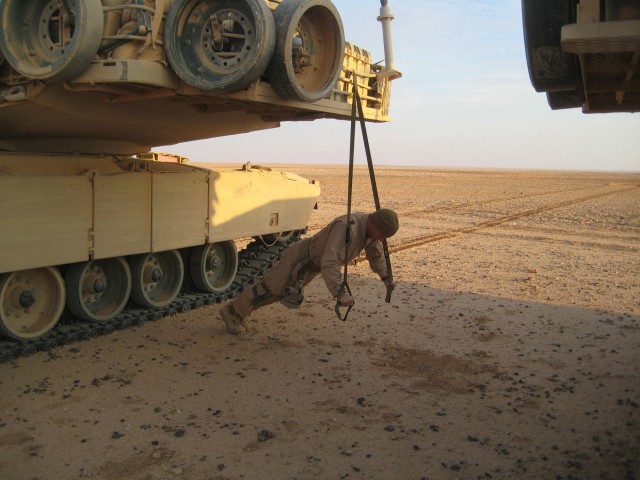
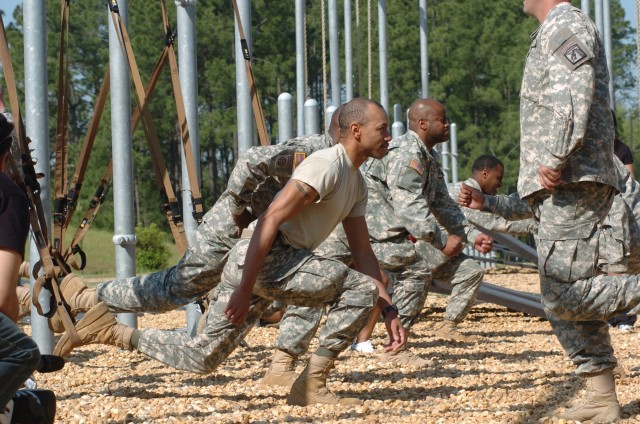
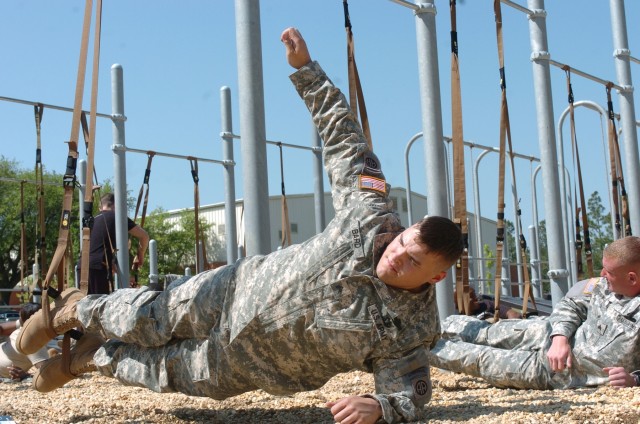
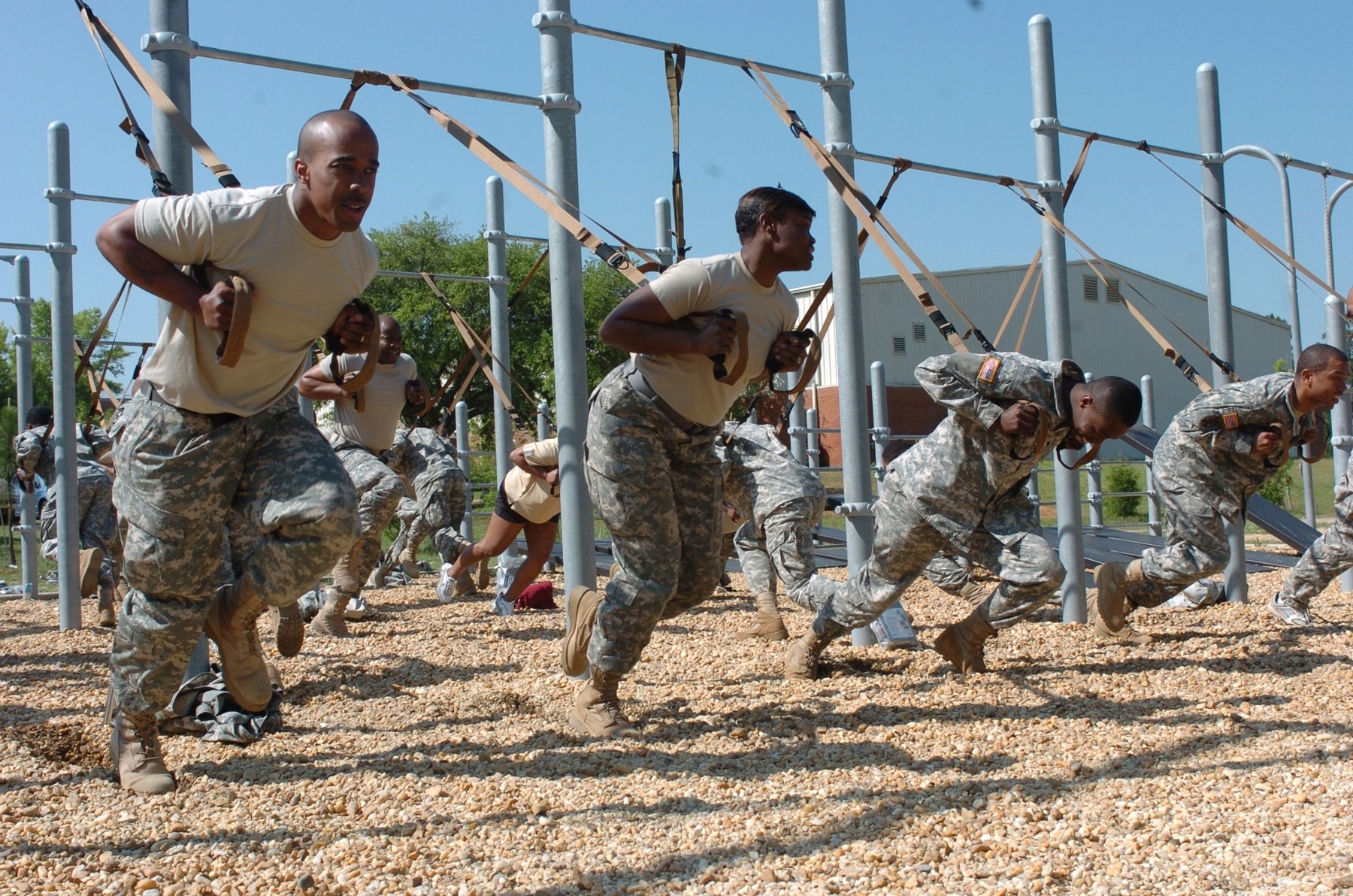

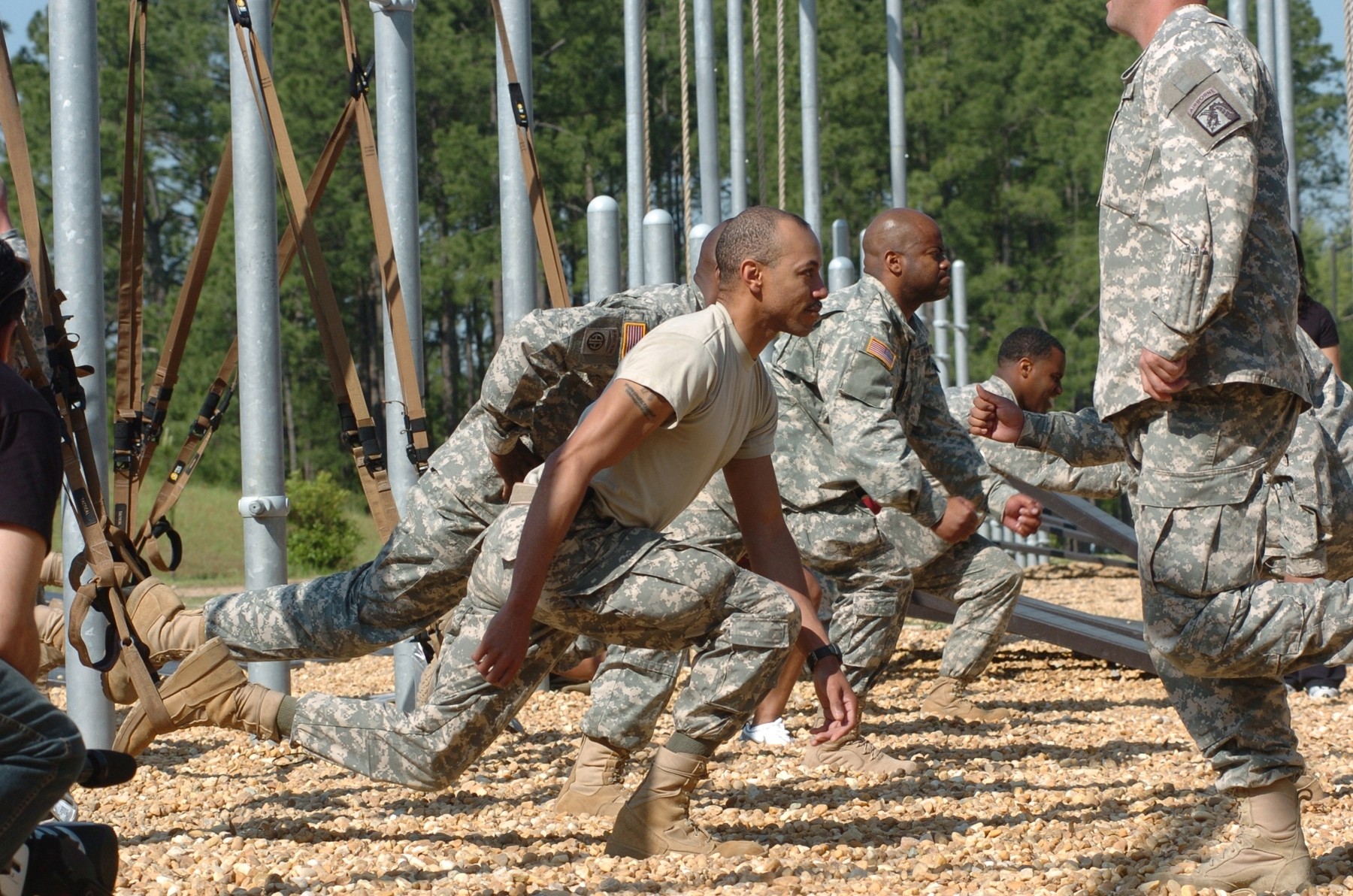

Social Sharing